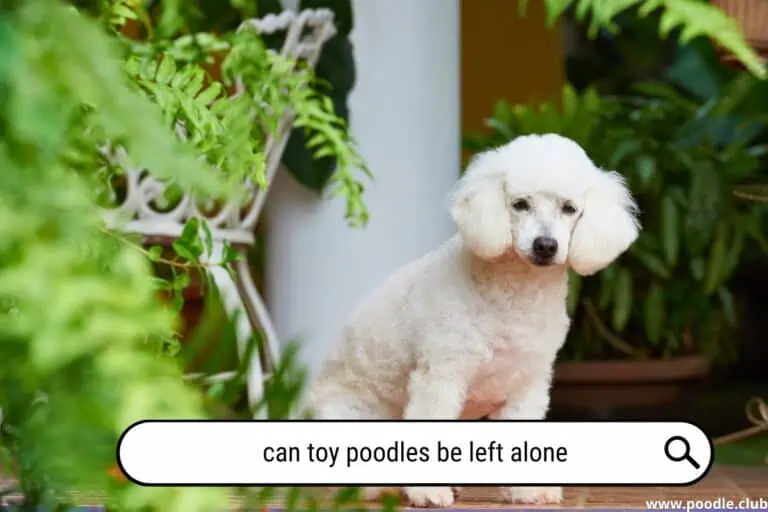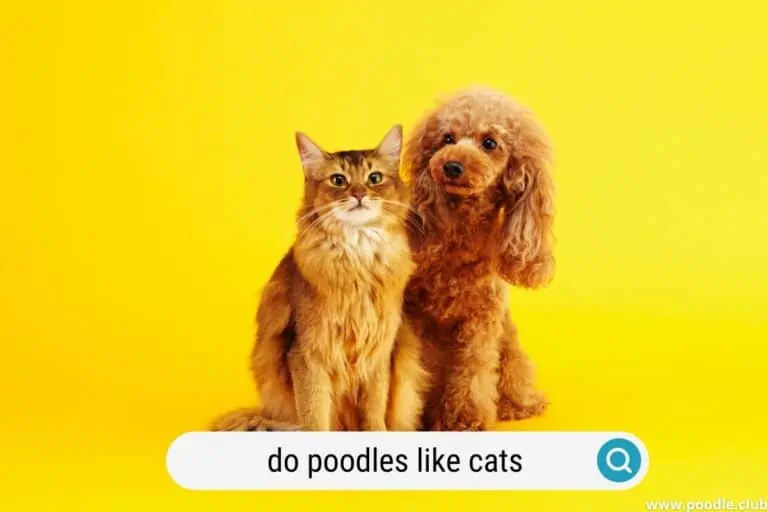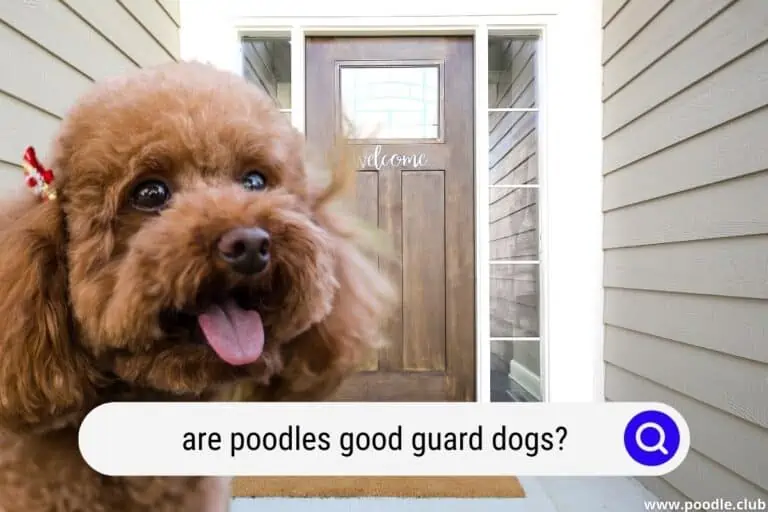Do Poodles Have Undercoats [Facts]
Have you ever wondered what lies beneath the distinctive curly coat of a Poodle? There’s more to these elegant dogs than their plush, stylish fur. In this article, we’re diving into the intriguing world of Poodle anatomy, specifically focusing on their coats.
You might be curious – do Poodles have an undercoat? Read on as we unravel this fascinating aspect of Poodle care and grooming, designed to offer you a better understanding of these clever and charming companions.
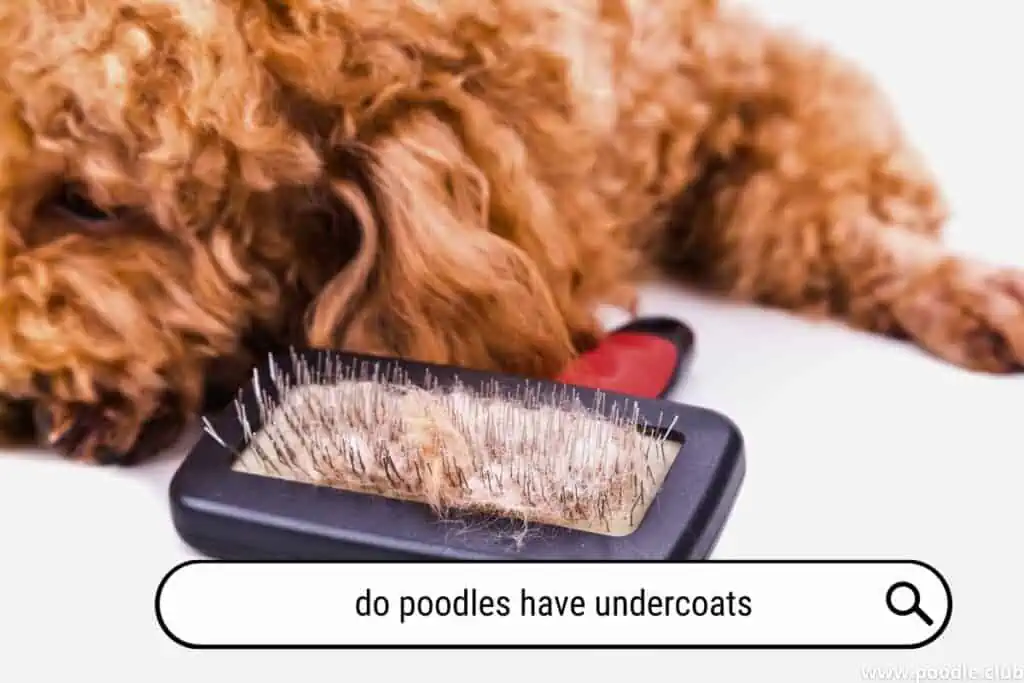
Poodles are unique in many ways, and their coat is no exception. Unlike many other dog breeds, Poodles do not have a dual coat comprising both an outer coat and an undercoat. Instead, Poodles have a single layer of dense, curly fur.
The fur of a Poodle is more similar to human hair than to typical dog fur. It grows in tight curls or cords and does not shed in the way that many dogs with double coats do. Instead, Poodles’ hair continues to grow and, if not groomed regularly, it can mat, which can lead to discomfort for the dog.
While this might seem like a disadvantage, there are significant benefits to the Poodle’s single coat. For instance, owners with allergies often prefer Poodles because their hair, which is shed much less frequently than other breeds, can be more hypoallergenic. This lower shedding also means less pet hair around the house.
However, due to this hair-like coat, Poodles require regular grooming to keep them comfortable and maintain the health of their skin and coat. This can include regular haircuts, brushing to prevent mats, and bathing to keep their skin clean and healthy.
For example, the stylish “puppy cut” often seen on Poodles is not just for aesthetics. This trim keeps the hair at a manageable length, reducing the chance of mats and tangles, making it easier for the Poodle to stay cool during the summer months, and making the coat easier to manage for the owner.
So, while Poodles might lack an undercoat that’s typical of many breeds, their unique single-layer coat is one of their defining characteristics. This special coat does require some extra care, but with regular grooming, Poodles can sport a comfortable and stylish look that’s truly their own.
PuppySpot is a reputable dog marketplace where you can browse and find compatible puppies right from the comfort of your home. They have placed over 200,000 puppies into homes in the US!
Understanding Poodle Coats
When it comes to Poodle coats, there are several factors that contribute to their appearance and texture. In this section, we’ll touch on the different coat types, colors, patterns, and genetics at play in the wonderful world of Poodles.
Coat Types: Single Coat vs. Double Coat
A common question among Poodle enthusiasts is whether Poodles have a single or a double coat. Poodles are actually single-coated dogs, which means that their coats only consist of one layer, unlike other breeds with a double coat such as a Golden Retriever. While some breeds have an undercoat for insulation and protection, Poodles have hair that grows continuously, which requires regular grooming to maintain.
Colors, Patterns, and Variations
Poodle coats come in an array of colors, including black, white, red, and brown. They also have various patterns, such as the parti pattern, which is a color combination of white and another color. Aside from the solid colors and patterned coats, there are even more variations like brindle, sable, and phantom. It’s like a Poodle rainbow!
Poodle Coat Genetics
The genetics of Poodle coats can be fascinating, as they play a significant role in determining the appearance and texture of their hair. For example, the Australian Labradoodle’s coat reveals an excess of the Poodle genome, which contributes to their curly-haired appearance.
Another interesting genetic aspect is the fading gene present in some Poodles, causing their coat color to gradually lighten over time. With so many factors at play, it’s no wonder people are captivated by the unique appearances of Poodles – not to mention their intelligence, agility, and companionship!
In a nutshell, understanding Poodle coats is both an art and a science. So, whether you’re contemplating adopting a Poodle, or you’re a seasoned Poodle-owner, it’s always fascinating to learn more about these magnificent, curly-haired companions.
Grooming and Maintaining Poodle Coats
Poodles are known for their curly, dense coats that require regular grooming to keep them looking their best. In this section, we’ll discuss common grooming styles and techniques, tips to prevent mats and tangles, as well as bathing and coat care for your poodle.
Common Grooming Styles and Techniques
There are various grooming styles for poodles, and choosing one depends on personal preference and your pooch’s lifestyle. Here are some popular options:
Continental Clip
This elegant clip involves shaving the face, throat, and part of the tail, while keeping poufs on the hips and ankles. The continental clip is often seen in show-ring poodles.
English Saddle Clip
Similar to the continental, this style involves shaved face, throat, and part of the tail, but with a more moderate amount of leg and hip hair.
Asian Style
This creative, artistic style incorporates various shapes and patterns, such as teddy bear faces or rounded paws, for an adorable and unique look.
Sporting Clip
This low-maintenance style is perfect for active poodles, as it involves trimming the hair short all over the body, including the face and legs.
Preventing Mats and Tangles
Due to their curly coats, poodles are prone to matting. To keep their fur in top shape, follow these tips:
- Brush regularly (daily for long-coat styles) using a slicker brush or comb. This prevents tangles and removes loose hair.
- Consider using a detangling spray to help make brushing an easier task.
Bathing and Coat Care
Regular baths are essential for keeping poodles clean and their coats healthy. Here’s what you need to know about bathing and coat care:
- Choose a mild, dog-friendly shampoo tailored for curly coats. Avoid using human shampoo, as it can be harsh on their skin.
- Make sure to rinse thoroughly to avoid shampoo residue, which can cause irritation.
- Use a conditioner to help maintain the coat’s softness and prevent tangles.
- Towel-dry your poodle after bathing but avoid rubbing the coat, as it can cause matting. Instead, pat and squeeze the fur gently to remove excess water.
- Blow-dry your poodle on a low heat setting, using a slicker brush to straighten the coat and maintaining a safe distance to avoid overheating.
With proper grooming and coat care, your poodle will not only look fabulous but also feel comfortable and healthy. In the words of a famous dog groomer, “Grooming isn’t just about style; it’s a labor of love.” With a well-maintained coat, your poodle will undoubtedly turn heads at the dog park, and who doesn’t want their canine companion to be both healthy and fashionable?
Do Poodles Have Undercoats?
Implications for Allergies and Shedding
One of the reasons poodles are popular among people with allergies is because they’re considered hypoallergenic. This is partly due to their unique coat type, which doesn’t shed as much as other dog breeds. Poodles have a single-coated fur, which means they only have one layer of fur – unlike double-coated breeds that have a secondary layer of dense undercoat.
As a result, poodles are less likely to shed hair or produce dander – the microscopic particles of skin that trigger allergens. If there’s any undercoat present in poodles, it’s minimal and not a huge factor in terms of allergies or shedding.
So, when it comes to the great undercoat debate, poodles might not have a clear-cut answer. This curly-haired dog breed has a unique coat type that’s single-coated, with possibly some fine undercoat hairs. Regardless, their minimal shedding and hypoallergenic properties make them a popular choice for dog lovers prone to allergies.
Poodle Health and Coat Issues
Poodles have curly, dense fur, which requires regular grooming. Despite their well-known fluffiness, they do not have a typical undercoat like some other breeds. This makes them less prone to shedding but can also cause certain health issues related to their coat. In this section, we will discuss some common skin conditions and coat issues in Poodles.
Skin Conditions and Irritations
Poodles can suffer from various skin conditions, such as allergies, that lead to skin irritation and itching. Frequent scratching may result in red, inflamed skin and even hair loss. To help prevent these issues, bathe your Poodle with a gentle shampoo and always rinse thoroughly to remove all soap residues. Additionally, keep their coat well-groomed and free of mats to ensure healthy skin.
Castration Responsive Dermatosis
Castration Responsive Dermatosis, sometimes seen in Poodles, is a hormonal imbalance that leads to hair loss, mainly around the dog’s rear end. The good news is that this condition can be treated by neutering the dog, which resolves the hormonal imbalance and often leads to the regrowth of the lost hair.
Sebaceous Adenitis
Sebaceous Adenitis is an uncommon skin condition affecting Poodles, resulting in inflammation of the sebaceous glands that produce the skin’s natural oils. Symptoms can include dry, scaly skin, hair loss, and a musty odor. While there is no cure for this condition, regular baths with medicated shampoos and moisturizers can help control the symptoms.
Mange and Hair Loss
Mange, which can affect all dog breeds, is caused by mites that infest the hair follicles. Poodles may be predisposed to Demodex Mange, sometimes referred to as red mange, leading to hair loss and skin irritations. Treatment often involves specialized shampoos, topical medications, and, in severe cases, oral medications. Early intervention is key to managing the condition effectively.
In conclusion, maintaining a Poodle’s coat requires attention and proper grooming. Be aware of common skin conditions and seek veterinary help when needed to keep your Poodle’s hair looking fabulous and their skin healthy.
Additional Information on Poodle Breeds
Sub-Breeds of Poodles: Standard, Miniature, and Toy
Poodles come in three distinct sizes, each with its own set of unique characteristics. The Standard Poodle is the largest of the three, standing up to 15 inches tall, and is often recognized for its regal appearance. These agile and intelligent dogs have historically been used for hunting and other working tasks.
Miniature Poodles, on the other hand, are quite literally a smaller version of the Standard Poodles, usually standing between 10-15 inches tall. Their compact size makes them perfect for apartment living, but don’t be fooled – they still pack a punch when it comes to energy and intelligence!
Last, but certainly not least, is the Toy Poodle. These pint-sized pups are the smallest of the bunch, standing no taller than 10 inches. Though small in stature, Toy Poodles are known for their spunky attitudes and charming personalities.
Poodles’ Popularity and Role in Shelters
Poodles are a popular dog breed, with their cute looks, hypoallergenic coats, and easy-to-train nature. This popularity, however, sometimes leads to an unfortunate overflow in dog shelters. A large number of Poodles and Poodle mixes are often surrendered or abandoned due to a lack of understanding about their grooming, exercise, and socialization needs.
- Standard Poodles require regular grooming and consistent exercise, which can sometimes be a challenge for busy or inexperienced dog owners.
- Miniature and Toy Poodles are more manageable in terms of grooming and exercise, but still require their share of attention to keep them happy and healthy.
Regardless of their size, all Poodles are intelligent and eager to please their humans. Taking the time to research and understand their specific needs can help ensure a long, happy life together, and help keep Poodles out of shelters in the future.
So, next time you’re considering adding a Poodle to your family, remember they’re not just fabulous balls of fluff, but resourceful and trainable companions that need your love, attention, and understanding to truly thrive.
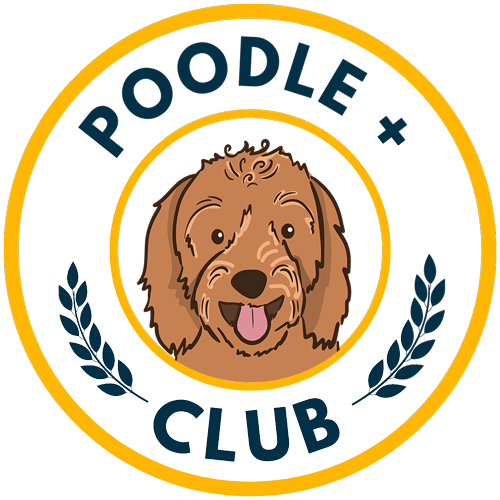

![What Cream Can I Put on My Dog’s Sore Bum? [Soothe Pain]](https://poodle.club/wp-content/uploads/2023/03/what-cream-can-i-put-on-my-dogs-sore-bum-768x512.webp)


